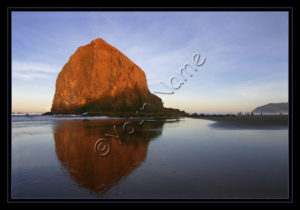 Art Law. It’s not really a fun topic of conversation for the average artist, but it is important. Nowadays, most artists and creatives have some kind of presence on the Internet, whether it’s through their website, blog, Facebook or other social media channels. Understanding a bit about Copyright Law is a must.
Art Law. It’s not really a fun topic of conversation for the average artist, but it is important. Nowadays, most artists and creatives have some kind of presence on the Internet, whether it’s through their website, blog, Facebook or other social media channels. Understanding a bit about Copyright Law is a must.
Taking steps to properly protect your artistic rights is more important now than ever. I learned this last year when my art was blatantly copied, I also learned that Copyright Law is very complex. However, this informative article caught my eye, so I wanted to share it with my readers.
*****
You can’t be a successful artist without creative innovation, a proper education, and … an extensive understanding of legal rights? It’s sad but true: Most artists would be helpless victims of theft without the protection of copyright laws. In an age where your art can be copied, uploaded to the web, and made available worldwide in seconds, it’s good to know you have a way to fight back.
So how do you go about copyrighting your work? It’s simple, really. Here are some easy steps to take to protect your artwork!

Register with the Copyright Office of the Library of Congress
Registering your work with the U.S. copyright authorities is a must. Copyright laws, which cover published and unpublished works, ensure other thieves (including other artists) can’t steal your creations without legal repercussions:
- They protect visual and written works including paintings, essays, photographs, and sculptures, and help establish reproduction limitations.
- For example:
- A properly copyrighted work can only be copied by its owner, who can also limit the rights of each work.
- So you can make a painting and sell it as prints in a web store like Etsy or Posters.com, but no one else can make prints without your permission. If they do, you can sue them for damages.
According to the Copyright Office, “you don’t have to register a copyright notice for every work you create.”
The most recent copyright law says, “copyright legally belongs to the artist from the moment of creation,” meaning you can challenge a copycat in court if you prove your work is original.
- But the Office says it’s in every artist’s best interest to register every work because doing so establishes it as prima facie evidence in a court of law.
- This means the original creator and his work gets the burden of proof in court, where registered art is “sufficient to prove a fact.”
- Details of this law are found in the copyright basics section here.
- Also, you can sell the full copyright of your art only if you register it, and you can also demand more money in court.
The registration process itself is quite easy.
Registering your creation is much easier now. You can register online! Follow this link.
Or you need to fill out a copyright registration notice (available to print from an online form), to the Library of Congress at:
- Library of Congress Copyright Office 101 Independence Avenue, SE. Washington, D.C. 20559 6000
- The day the Copyright Office receives the package is the day your registration becomes official.
- If your work is first published in a foreign country, you need to include two copies of the work as a mandatory provision deposit “within three months of publication.”
- You can also register online through the electronic Copyright Office (eCO). In fact, the Office prefers online registrations because it’s faster to process “big media” files, like songs, large painting files, and movies. The fee is also cheaper and you can track the status of your file online.
- Once the registrar’s office examines your applications, you’re given an official certificate of registration, which arrives through snail mail within 5 months of submission. Then, evidence of your copyrighted work will be available online and you can link to this public record from any web property, like a Flickr artist page.

(Above is my painting, “Hummingbird & White Orchids” ©2010 LMcNee)
 (Here is the copy!)
(Here is the copy!)
Personal Web Copyrights
But what happens while you wait for the Copyright Office to approve your submissions? You need to market and sell your pics online today! Luckily, you have several options to fill the gap.
- The one most used is the copyright notice, best known as the C symbol (©), plus the year the work was published, or the abbreviation Copr.
- This is usually accompanied by a written notice, prominently placed, and clearly explaining the extent of the copyright.
- The correct copyright display also includes:
- The name of the owner of the work, “or an abbreviation by which the name can be recognized,”
- Such as, “copyright © 2010 Prince Michael Jackson.”
Sometimes a © notice is added as a watermark on top of an image by the artist, other times by a publisher’s software.
- For example, Google’s Picasa program recently added a “created by” watermark option for all downloaded pictures.
- The symbol is important because it tells the viewer or reader that it’s a work protected by copyright.
- This helps in court cases when another artist cites his use of copyrighted material as innocent infringement, which means they accidentally used your work not knowing it was copyrighted.
- It’s especially hard to argue your innocence of theft when a copyright was explicitly displayed.

Artists also manage to post artwork online without worry by using secure methods of software management. Painters and designers post images as small files of low resolution, for preview purposes. Others use scripting techniques to prevent right-click image saving, or use programs to track users’ copying habits.
Some artists don’t mind if a selection of their art is used for free if they can sell another work for full price. This is the Freemium economic concept and many online use it, often through Creative Commons licenses that flexibly define segments of their catalog. You can find more about CC licenses here.
Local and International Copyright Laws
It’s worth mentioning in an increasingly international world: The laws of the U.S. aren’t the same in other places.
- But you should be happy to know the government has properly defined copyright provisions in most of its free-trade agreements.
- Many treaties, such as the Berne Convention for the Protection of Literary and Artistic Works and the World Intellectual Property Organization Copyright Treaty affect copyright.
- Most of these try to duplicate U.S. copyrights, but not all do.
- So you need to check in the Circular 38a (article) notice of the International Copyright Relations of the United States website to double check before selling any art overseas.
It’s also good to note that whenever a nation changes leadership, or changes its constitution, a lot of the previous treaties with the country are still upheld. When the USSR separated into many countries in the 1990s, its successor countries were still under obligation to copyright treaties with other countries.
There’s a Limit to Everything: The Copyright Period
What about the length of a copyright? We’ve all heard of the early Disney cartoons that are going to be available to use for free in the next twenty years because their copyright will run out. Well, it turns out copyrights last longer than you might expect.
Here’s how the time limits for copyrights break down:
- Created before 1978 (published or unpublished, copyright or not): Protected for the life of the creator plus 70 years, or until the end of 2002, whichever is greater.
- Created before 1978 and published between 1978 and 2003: Protected for the life of the creator plus 70 years, or until the end of 2047, whichever is greater.
- Created after January 1, 1978: Protected for the life of the longest living author (for joint artwork) plus 70 years, or 120 years from creation, whichever is greater.
So, don’t let art thieves steal your work, because you have so many options to protect your artwork!
PS. Please check out this website to learn more about your rights and how to send a “Cease and Desist Letter” to the plagiarizer.
*****
Guest author: ArtBistro. This article was originally posted on ArtBistro.Monster.com. Thanks to Artbistro.Monster.com for sharing such valuable information with us.
Let’s meet on Facebook and Twitter!
If you liked this article you might enjoy these as well:
How I Stopped a “Copycat Artist” on Facebook (<<< the comments at the end of this post are SUPER informative!)
When Are You Ready to Call Yourself a Professional Artist?
10 Important Things Every Aspiring Artist Should Know: Part 1
Also, you should check out this article by Clint Watson, “Don’t Fear the Copycat”.









Great advice, Lori.
A good tip I heard – and it’s especially good for those who can’t afford frequent registration fees – is to seal a photograph of the work in question in to an envelope and then send it to yourself via Special Delivery. (Special Delivery is for UK residents, or use the equivalent for your own country.) That will ensure you have a record of the date it was posted. Don’t open the envelope! Put it in a safe place so if there is ever a dispute about the earliest date the work was created, the envelope can be opened in a court of law. I’d also write the title of the work on the back of the envelope so you can find the correct envelope amongst all your others.
Keeping a paper trail also helps prove ownership, inspiration and date of creation of a particular work. That could be documentary evidence such as preliminary sketchbook work, publication in a book or magazine, inclusion in an exhibition catalogue, copies of consignment notes, inclusion in gallery/your own publicity material… It all adds up to proof of when and why you created a particular piece of work and is difficult for a copyist to refute.
Great advice Jackie. I have heard of this tip long ago and forgot about it! Thanks for reminding me and for sharing it. I hope others take the time to read this thread of valuable comments.
I really appreciate you taking time to visit, read and comment here on this blog-
Lori 🙂
Hi,
An intellectual property rights attorney I heard about 4 years ago said that the
“poor man’s copyright”….sending oneself a copy of original work was not a good
idea. Along the same line I suppose this would not be either, but it crossed my
mind that one’s camera or camera card might offer some manner of ‘proof’
especially if one posed with the work. I have in the past taken the time to
register my work but I’m behind on it now. Just today I read an artist’s
policy on her FAA site that no one who ever contacted her for free use of
her work had honored the terms she set forth. That was disheartening!
Just today I had a request to upload my work to a gallery in Asia. I thought
I could set out some terms but based upon her experience, maybe not!
Thanks again for your sharing so much with us all.
Betty Pieper
Hi,
I`m thinking of the “poor” people and don`t want to make the lawyers rich. So most of my art is copyleft.
Hahaha. Other than adding a © to my art, These days, I generally ‘copyleft’ my artwork too. 😉
Thanks for the interesting comment-
Lori
Great article, and you are such an amazing artist! I just subscribed and can’t wait to hear more! Thank you
Hello Kyle-
Thanks for the nice words. I really appreciate your support. Let me know if you have any questions for suggestions.
Lori 🙂
Hi, can someone please tell me the best copyright company in Australia for music?
Thanks for your advice in advance… :0)
Hello Davina, copyrighting for music is not my area of expertise. I wish I could be of more help…hopefully, someone in this thread can help you.
Thanks for stopping by for a visit-
Lori
I am so happy to have stumbled on your site. I am a new artist (canvas painting with acrylics) and ready to sell my art on etsy but i was adviced i should protect them first. So i googled key words and all the many sites were just too much indepth information but your site kept it simple and to the point.
My only one question i have is if i have 40 odd canvas painting. Can i take a photo of each of them and print them (Eg 6 by 4) and copyright them at the same time and pay the government that one time fee. So basically my question is grouping all my artwork by catalogue.
I am also interested in knowing copyrights for fabric designs. Assuming i see use a tribal symbol sign and i put color to it and manipulate the designs in different forms onto a fabric. Can i then copy the fabric design my own and copy right it?
Please help.
Hello Akos,
Thank you so much for taking time to comment. I am glad this site is helpful to you! Congrats on your new artistic journey. Yes, copyrighting your art in a group is the best and most cost efficient way. Copyright Law is complex, checkout this website for more information http://www.copyright.gov/title17/ Also, my friend Tara is an art licensing expert…a fabric artist…here is her site > http://tarareeddesigns.com/licensing.html
I hope this helps answer your questions-
Lori 🙂
Simple ..my daughter colored a beautiful picture we framed it and now people are interested in purchasing how should I protect a childs art work
Thank you
That is a supreme compliment to your daughter. Visit the Copyright Office http://www.copyright.gov/ for up to date forms. Follow the directions, but nothing is foolproof. Good luck!
Hello,
Hello my name is Tylyne Bryant and I have a couple of questions about the business part of being a painter. Before I get to that I want to thank you for sharing this informative article and I appreciate it very much!
I just recently sold a painting and I need more business. What is a great way for me to get my name out there?
How do you price paintings?
How do you feel about auctions?
I was also thinking about making a small gallery in the back yard. (without it looking like a backyard) How do you suggest I go about that?
Thank You!!!
Hello Tylyne, congrats on selling your painting. A backyard gallery event can be a really nice way to promote your art. Also, social media is a free way to do this too. I am not sure what type of auctions you are speaking of??? There are many articles on this blog that can further help answer your questions. I hope this helps.
As a photographer, I needed exclusive ownership of my work. After some extensive research I found out about this firm called Levy, Levy & Sosa in Miami. I decided to set up a consultation to meet with their attorney and I’m sure glad I did. They assisted me with applying for copyright registration, the process was so simple and they guided me along the way, explaining in ways that were easy to understand. I encourage you to contact them on 1-800-464-5554 or visit their website http://www.trademarklaw101.com/practice-areas/copyright/ to secure your work!
Hello Paul, thanks for sharing your link and information for anyone in need of an Art Law lawyer.
once I copyright a piece, do I have to copyright everything I draw? or can I get a blanket cover for any work I post? ie: Original work by: Totally-Wasted-Thoughts
All Rights Reserved
I thank you in advance in anticipation of you advisement.
regards Kirk
Hello Kirk,
You can copyright in bulk. It is a tedious job, but it is easier and way less money to do it this way. I hope this helps.
Lori 🙂
Hello Lori,
In a class I took at MTSU, we had a journaling session everyday, and at the end of the semester (today), we turn in an example of our journal for publication, complete with a title page, dedication,literature, and about the author page. My submission was based on a story that I made up that is quite creative and I want to protect it. I’m talking J.K. Rowling creative! I had already submitted the assignment and mentioned earlier in the year to my professor (who is an already published author) that I wanted to pitch the idea to her and see if I could get my work published as well, but she said she wanted to read it first. Well, today’s class was cancelled, and we submitted our works via e-mail, which made me a bit skeptical.
I’ll get my idea out before I get screwed! After checking out your web-page, I know that I shouldn’t procrastinate!
I know how you feel. It is best to have your written works copyrighted before sharing them. Hopefully, everything will work out! Most likely it will, but it is good you are being mindful. Good luck!
Hi there,
I really want to thank you for the information given..I have been freelance/doodling for years and people see me drawing on the train, park, home etc..I have a signature within the pictures(its what i call my work)..I guess my question is does that count as a copyright????
Hello Alisha, many apologies for the belated reply! Thank you for your patience…others can copy your theme, but not directly your exact art. I am not a copyright expert, and would suggest seeking an art law lawyer if you are really concerned. Thanks a lot for the visit.
I own a shop on Etsy, painting designs on shoes and am constantly coming up with new original designs to sell. I try my hardest to not copy anyone else’s designs, and go so far as to search specific terms for each design, just to make sure that no one could come after me for copying them. Do you suggest getting a copyright for each individual design, or is there an easier way, such as something overall for my company that would cover any design that I produce and publish for sale?
I really appreciate this blog post, so much!
Ashley, first of all many apologies for the belated reply!! I am way behind on comments… By now, I hope you have found the answer. However, I am not a copyright expert. I would suggest speaking with a copyright lawyer. I wish you luck! Thank you for enjoying this post…
Hello, I’m from Morocco and I’m only 18 years old !
I never show my work to the public because simply i fear copycats
Is there any way to protect my oil paintings in Morocco ? are the copyrights International ? if so, then how ?
have a great day ! I’ve been enjoying reading ur articles
Hello Hachim, yes there are copycat artists everywhere. Reach the latest blog posts that have been posted here recently. I hope you find some tips to help protect your work 🙂
Hi Lori, can you please advise me if you can copyright a procedure for art work.
Not the finished artwork itself. I have seen a artist create a painting that I would like to try doing, but do not want to infringe on the concept.
The colors, the shapes would be completely different than theirs it’s just the procedure how it’s done that I am confused whether I would be breaching copyright.
Thankyou.
Hello Sandra, thank you for asking. As long as you do not plan to sell the recreation, you can copy a painting as a learning exercise. Artists have learned this way for centuries. However, if you want to sell your art, you should develop your own composition. It is ok to be inspired by others, but do your best not to copy! Good luck.
I’m sorry that you had your art copied. That’s a really stressful situation. It’s kind of a win-lose situation. The internet is a great place to get your art out there to make your presence known, but you never know who is going to steal what you upload. As an artist myself, I am thankful that you talked about Google’s Picasa program. I frequently use this, and even though it is possible to remove the watermark, it is not by any means easy!
Hello Luke, I am way behind on answering comments. My sincere apologies. I’m glad you enjoyed this article. Thanks for your nice comment.
Hi Lori,
Your artwork is amazing and looks very unique! Keep up the good work on your website! I wanted to ask you, if for example you have copied a painting for learning exercise (many students do it back as school) and would like to showcase it on a social site (not sell), what would be the best way to acknowledge the original artist?
Thankyou
Hello Jag, my apologies for the very belated reply. I have so behind on comments. The best way to acknowledge and artist if you copy them for an exercise is to credit them as the original artist. For instance, if you have copied a painting sign it, Jag after Richard Schmid. On a social site, you can also explain it is a copy and name the artist. You should be ok. Thanks!
Thank you for the helpful article.
You are welcome!
Good evening. This site http://www.copyright.gov of America, applies to any citizen? I’m from Europe. I read that it would be unsafe online registration copyright. I rely on what, when I register my art on this site? It’ really safe? Thanks a lot!
Hello Richard, the copyright laws are different in each country.